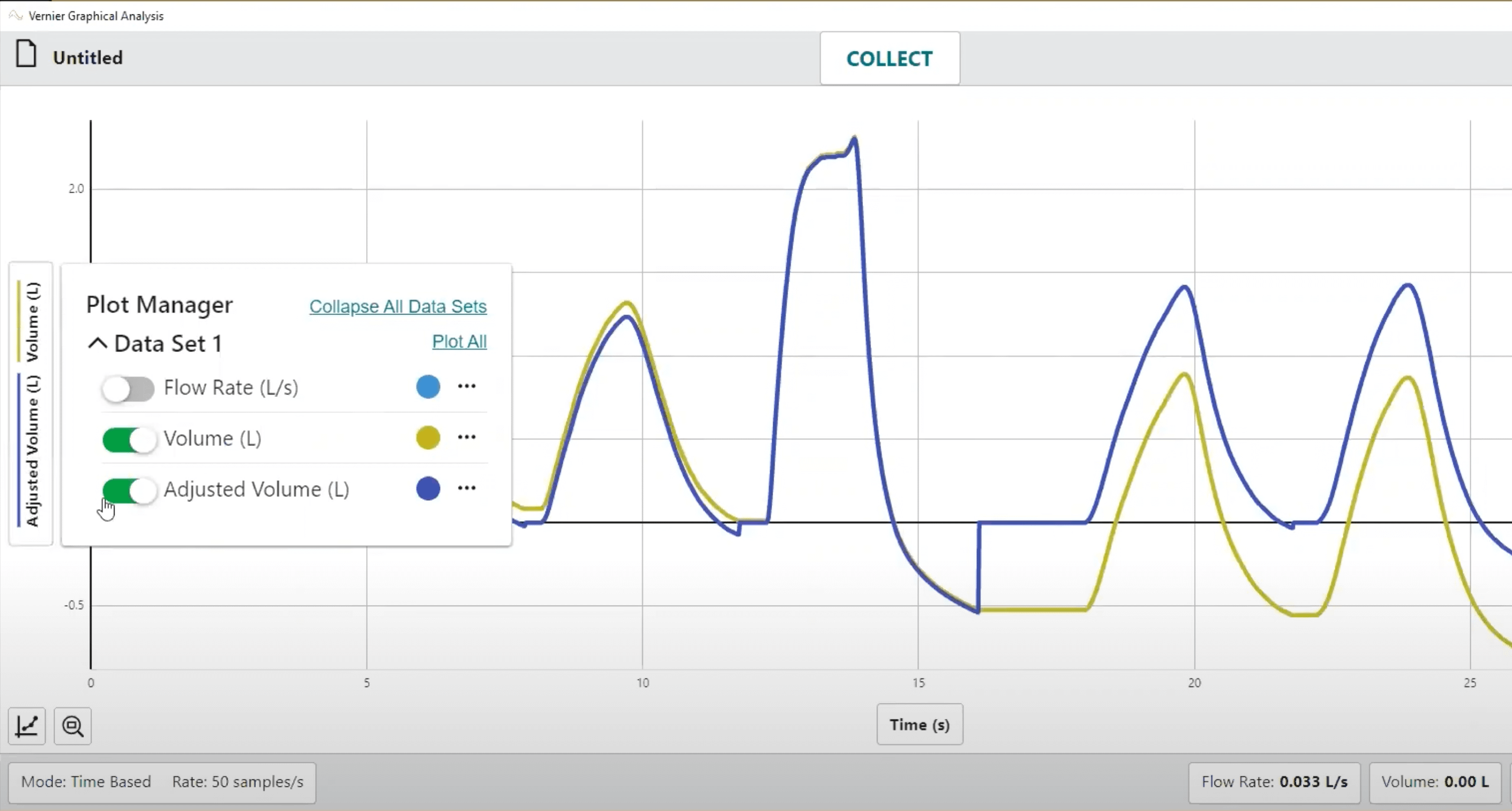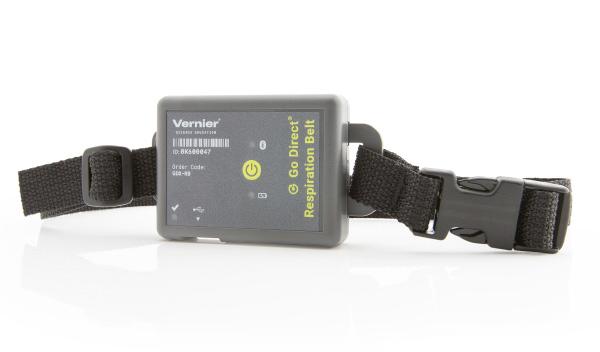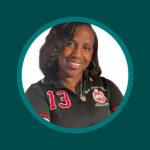
Sharing ideas and inspiration for engagement, inclusion, and excellence in STEM

Understanding the respiratory system is a fundamental component of human physiology that provides students with critical insights into how their bodies function. For educators looking to support their human physiology lessons with technology, Vernier offers a variety of sensor options that can be tailored to different educational needs and budgets. If you’re trying to decide between the Go Direct® Spirometer and the Go Direct Respiration Belt, we’ve highlighted their distinct features and advantages to help you select the right tool for engaging your students in effective respiratory system studies.
Option 1: Best for Advanced Analysis and In-Depth Respiratory Studies

Go Direct Spirometer paired with
Human Physiology Experiments: Volume 2
Ideal for
- Advanced high school or college-level classes
- Classrooms with budgets that can support ongoing consumables costs
- Coursework that is specifically focused on spirometry
- Collecting more detailed quantitative data
The Go Direct Spirometer is an excellent choice for introductory as well as more advanced high school and college-level classes interested in looking at lung volume parameters, tidal volume, and flow rate. It also includes advanced features, such as channels that can automatically adjust for baseline drift making data easier to interpret in Vernier Graphical Analysis®. We recommend pairing the Spirometer with our lab book Human Physiology Experiments: Volume 2, which includes spirometer-specific experiments, such as “Analysis of Lung Function” and “Simulating Asthma.”

Go Direct Spirometer features
- Compare and analyze respiratory patterns.
- Measure tidal volume and other lung volume parameters.
- Analyze lung function.
- Control baseline drift with a built-in channel.
- Enable extended experiments with a special channel.
The Go Direct Spirometer also requires the use of a disposable bacterial filter and mouthpiece for student health and safety (three are included in each product purchase). This bacterial filter has a viral filtration efficiency that is the equivalent of an N99 mask, so it’s very safe to use and is designed to protect both the student from the spirometer and the spirometer from the student. The most important thing to note here is that bacterial filters cannot be shared—each student must use their own filter.
This means classrooms will periodically need to restock the disposable filters as they get used by individual students. You can extend the use life of your filters by writing students’ names on the filters and storing them in plastic bags between uses. When stored this way, the filter should be effective for about a month or so. But this is required maintenance that incurs an additional cost, and it should be taken into consideration when choosing your human physiology tools.
For tips on how to use the Go Direct Spirometer to study lung function, watch our recent webinar.
Option 2: Best Cost-Effective Choice for Versatile, Introductory Experiments

Go Direct Respiration Belt paired with Human Physiology Experiments: Volume 1
Ideal for
- High school or introductory college-level classes
- Making an economical choice for exploring respiration experiments with no ongoing costs
- Use in a versatile range of human physiology experiments
- Collecting more qualitative data
The Go Direct Respiration Belt is a very simple-to-use sensor that can be used to study respiration effort and respiration rate with Graphical Analysis. This tool uses a force sensor and an adjustable nylon belt to easily collect data on human breathing patterns. In contrast to the Go Direct Spirometer, this sensor offers a much more simple and qualitative approach to exploring and understanding respiration. It also does not require any additional equipment for regular use, like bacterial filters, although it’s a great tool to use alongside other human physiology sensors, such as the Go Direct EKG Sensor or other heart rate sensors.
We also recommended pairing the Respiration Belt with our lab book series Human Physiology Experiments: Volume 1, which is a great start to cover fundamentals like “Respiration and Ventilation.” If you choose to also try out some more advanced experiments, Volume 2 uses the Respiration Belt to explore the “Diving Reflex” and stimuli responses through “Biofeedback.” And if you have Vernier Graphical Analysis Pro, you can also leverage our free sample experiment, “Control of Human Respiration,” to get started with video and data.

Go Direct Respiration Belt features
- Observe how respiration rate changes after exercise or breath holding.
- Observe how respiration effort (the force exerted by the chest during respiration) changes after exercise or breath holding.
- Measure steps and step rate with the built-in pedometer.
Would I ever want to use both the Go Direct Spirometer and Go Direct Respiration Belt?
Certainly! Because the sensors measure different parameters related to respiration, they can complement each other in your physiology course without overlapping specific topics. The Go Direct Respiration Belt is most useful in tracking respiratory patterns and breathing rates, and when paired with other sensors, such as the Go Wireless Heart Rate, students can explore the relationships between organ systems. It also contains a step counter and can report step rate with a simple setting in software, making it a versatile tool for studying exercise.
The Go Direct Spirometer, on the other hand, allows students to take a deep dive into studying airflow and volume during ventilation cycles. Using both sensors offers students a wider breadth of experiences to shape their understanding of human body systems and allows educators more options to customize their laboratory syllabus. However, we’ve partnered with many educators and departments where budget restrictions and curriculum goals typically lead to choosing one of these options over the other. If you have questions about which equipment is right for your school or classroom, we can help! Find out more about our product demos and personalized training
For more details about using these two sensors, watch our recent webinar, Student-Led Explorations into Respiration Rate and Spirometry.
Questions about our human physiology sensors? We’ve got you covered! Reach out to our team at physiology@vernier.com or give us a call at 888-837-6437.
Share this Article

Sign up for our newsletter
Stay in the loop! Beyond Measure delivers monthly updates on the latest news, ideas, and STEM resources from Vernier.






